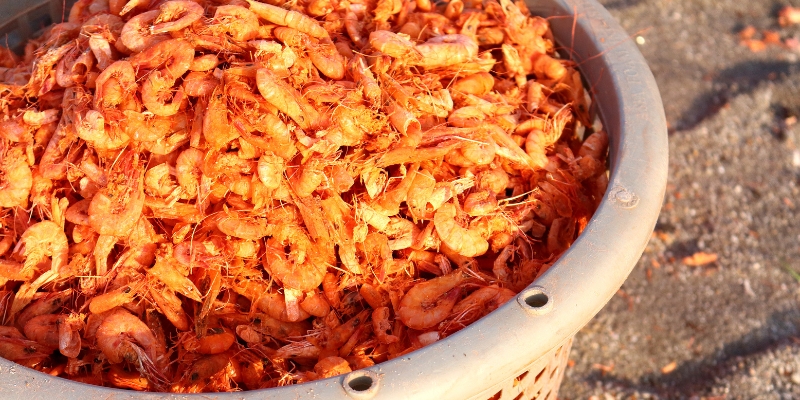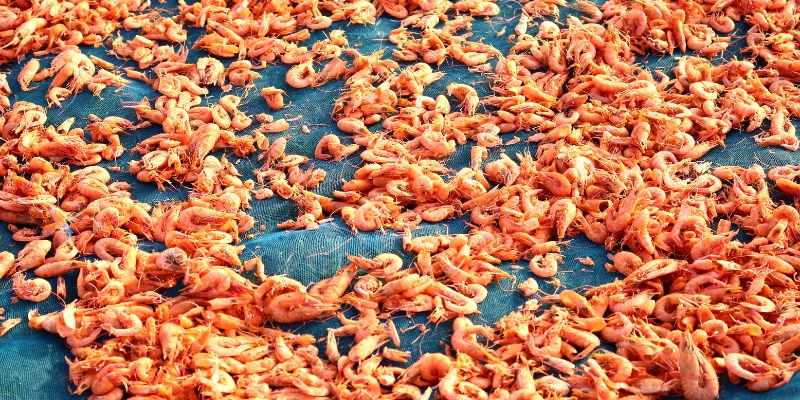Unleash the Best Seafood Flavors in Your Dishes
Sep 02, 2023 By Fabian Forte
Fish fans know nothing tastes as good as newly caught, adequately cooked fish. Learn how to make the best seafood meals, whether your choice is shrimp, fish, crab, or lobster if you want to impress your family and show off your cooking skills. Still, where do we start? It is essential to find the best fish that can be found. Going to a well-known fish store or seafood supplier for the best products would be best.
Now that you have your fish, you must learn how to cook it well to eat it. Each way of cooking—grilling, baking, boiling, or searing—leads to a taste and texture that are very different from the others. Try out different marinades, sauces, and other toppings on the fish to get a more tasty result. As you learn to cook fish better, you are about to go on a learning journey that you will remember for a long time.

Nutrition information about Seafood:
Seafood is tasty and helps your body in many ways that are good for your health. In particular, fish is a great way to get the high-quality protein our bodies need to grow and keep their cells healthy. There is a lot of this protein in fish. In addition, it has a lot of omega-3 fatty acids, which are suitable for your health for several reasons, such as reducing inflammation, improving your heart health, and ensuring your brain keeps working well. Seafood is also a great way to get minerals like vitamin D, B12, salt, zinc, and selenium.
These nutrients are crucial for good health in general, including a strong immune system and functioning thyroid. You can get some of the nutrients you need by eating fish as part of a balanced diet without sacrificing flavour or satiety. When choosing seafood, it is essential to do enough research and choose items that were not only caught recently but also in a good way for the environment. By doing this, you not only lower the risks of pollution and overfishing but also raise the health benefits that could come from it.
Steps for making the Make the Best Seafood:
Choosing Fresh Seafood:
Before cooking fish, pick fresh ingredients. Visit renowned seafood markets or local fishmongers for many possibilities. Clear eyes, glossy skin, and an ocean-like scent are signs. It's probably not correct if anything seems wrong. Choose sustainably to support ethical fishing.

Preparation and Cleaning:
Seafood must be cleaned and prepared correctly to preserve quality and safety. Scales, gut, and deboned seafood depend on the kind. Before cooking, remove any remaining dirt and debris with cold water and paper towels.
Flavorful Marinades:
Flavorful marinades enhance fish flavours. Try different herbs, citrus juices, olive oil, and spices to make a marinade that matches the fish. Allow fish to marinate long enough to absorb flavors.
Grilling Techniques:
Grilled fish has an irresistible smokiness. Salmon and swordfish need direct heat, whereas flounder and sole need indirect heat. Watch the cooking process to prevent overcooking and keep fish moist and tender.
Tasteful Seafood Sauces:
Sauces may make seafood memorable. Try mango-chili salsa for a tropical touch or lemon-butter sauce for a rich finish. The fish and sauce may create an excellent flavor combination.
Pan-searing perfection:
A hot pan, oil, and patience are needed for the ideal sear. Start pan-searing fish fillets skin-side down for a crispy texture, then finish in the oven for even cooking.
Steam and Poach:
Steaming or poaching fish maintains its delicate flavors and textures. To add delicate flavors, add fresh herbs, garlic, and wine.
Creative Seafood Pairings:
Creatively blend complementing items to elevate seafood recipes. Create a harmonious dish by balancing flavors, textures, and colors. Citrus fruits, fresh herbs, nutritious grains, and colorful veggies improve meals.
Ceviche & Sushi Art:
Explore raw fish with sushi and ceviche. Precision-roll sushi rolls with fresh seafood and accompanying toppings. Marinate fresh fish in citrus juices with herbs, chiles, and other ingredients to make ceviche.
Safety and Storage:
Food safety is essential while handling fish. To minimize cross-contamination, Keep raw and cooked seafood cold at all times and chop them with different tools. Consume fish within suggested durations for freshness.
Restaurant-Quality Plating:
The food experience depends on the presentation. Fresh herbs, vivid sauces, and attractive side dishes enhance fish meals. Careful plating enhances the dish's appearance and makes eating enjoyable.
Discovering Global Cuisines:
Immerse yourself in international seafood dishes. From Italian seafood spaghetti to Thai coconut prawn curries, each cuisine shows how to use seafood's adaptability.
Healthy Choices:
Lighter cooking techniques emphasize seafood's nutritional value. You may enjoy excellent grilled, steamed, and baked foods without sacrificing health.
Aromatic Herbs and Seafood:
Learn how to improve fish flavors using fragrant herbs, including dill, basil, tarragon, and cilantro.
Bettering Seafood Chowders and Bisques:
Learn to blend flavors and textures in creamy seafood soups like chowders and bisques.
Sustainable Seafood Options:
Explore sustainable seafood alternatives and how to find and support them.
Pan-frying to perfection:
From fish and chips to crispy calamari, learn how to deep-fried seafood for the ultimate crunch.
Enhancing Seafood Tacos and Tostadas:
Try various seafood fillings and vivid garnishes to flavor fish tacos and tostadas.
Enjoying Soy and Ginger Seafood:
Discover how to make Asian-inspired fish recipes that showcase soy sauce, ginger, and other spices.
Special Occasion Seafood:
Learn how to make lobster thermidor and seafood paella for special occasions.
Beyond the Basics: Marination Art
Explore dry rubs, brines, and ceviche-style marinades.
Catching and Cooking Shellfish:
Discover seafood, from choosing the best clams and mussels to making linguine alle vongole.
Mini Delights for Foodies: Seafood-Infused Appetizers
Seafood-stuffed mushrooms and prawn cocktail shooters are delicious seafood appetizers.
Fusion seafood: Blending culinary traditions
Try cross-cultural fusion by adding surprising ingredients to seafood for unique recipes.
The Foundation of Flavour: Homemade Seafood Stock
Make seafood stock using leftover shells and trimmings to flavor soups, sauces, and risotto.
Cooking Whole Fish Confidently:
Cook entire fish confidently using grilling, roasting, and steaming to maintain natural flavors.
Seafood Desserts: A Unique Finish:
Try shrimp-infused sorbet or fish-shaped gelatin to defy seafood dessert traditions.
Classic Seafood Retrospective: Nostalgic Delights
Recreate classic seafood recipes with a modern touch for a nostalgic but modern meal.
Conclusion:
You'll need experience, skill, and a lot of love to learn how to cook the freshest fish like a pro. To make meals with seafood taste better, you need to know what makes each type of seafood special, choose things when they are at their freshest, and cook them the right way. Each part of the final beauty makes a unique addition, whether it's seasoned and cooked fish, scallops sizzling in butter, or slow-warming lobster.
When, how, and where a fish feast is served can make a big difference in the whole experience. No matter how experienced you are as a chef or how new you are to cooking at home, you should learn more about fish and try new products and methods. This is true no matter how much you know about cooking. If you are willing to put in the time and effort and aren't afraid to try new things, you might be able to learn how to make seafood meals that will make you and your guests want more. If you are willing to put in the time and effort, you may also have a bit of creativity.








